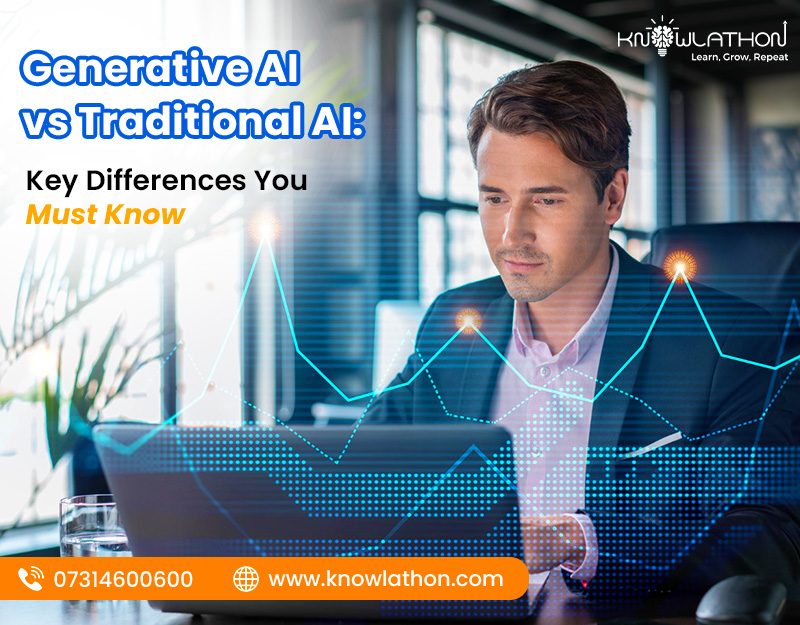AI-Powered Clouds: The Next Big Leap in Cyber security & Ethical Hacking

AI-Powered Clouds: The Next Big Leap in Cybersecurity & Ethical Hacking
The digital transformation is reshaping industries; cybersecurity has become a cornerstone of organizational resilience. As cyber threats grow in complexity and frequency, traditional security measures struggle to keep pace. Enter AI in cybersecurity and cloud security automation, a revolutionary combination that is redefining how we protect digital assets.
The Rise of AI in Cybersecurity
Artificial Intelligence (AI) is no longer a futuristic concept; it is a transformative force driving innovation across industries. In cybersecurity, AI is proving to be a game-changer by enabling organizations to detect, respond to, and mitigate threats with unprecedented speed and accuracy. Unlike traditional rule-based systems, AI leverages machine learning (ML), deep learning, and natural language processing (NLP) to analyze vast amounts of data, identify patterns, and predict potential vulnerabilities.
Why AI Matters in Cybersecurity
- Volume of Threats: The sheer volume of cyber threats—ranging from phishing attacks to ransomware—has overwhelmed manual security processes. AI can process and analyze massive datasets in real time, identifying anomalies that might go unnoticed by human analysts.
- Speed of Response: Cyberattacks often occur in milliseconds. AI-based systems can detect and respond to threats almost instantly, minimizing damage.
- Adaptability: Cybercriminals continuously evolve their tactics. AI systems learn from new data, enabling them to adapt to emerging threats without requiring constant manual updates.
- Cost Efficiency: Automating routine security tasks with AI reduces the need for extensive human intervention, saving time and resources.
AI’s ability to analyze historical data and predict future threats makes it a critical tool for modern cybersecurity. From detecting zero-day exploits to identifying insider threats, AI-based threat detection is transforming how organizations safeguard their systems.
Cloud Security Automation: The Backbone of Modern Cybersecurity
The shift to cloud computing has revolutionized how businesses operate, offering scalability, flexibility, and cost savings. However, it has also introduced new security challenges. Cloud environments are dynamic, with workloads constantly shifting and data flowing across multiple platforms. Traditional security measures, designed for static on-premises systems, are ill-equipped to handle these complexities. This is where cloud security automation powered by AI comes into play.
How AI Enhances Cloud Security
- Real-Time Threat Monitoring: AI-driven tools continuously monitor cloud environments, analyzing network traffic, user behavior, and system logs to detect anomalies. For example, machine learning models can flag unauthorized access attempts or unusual data transfers in real time.
- Automated Incident Response: When a threat is detected, AI systems can automatically initiate responses, such as isolating compromised systems, blocking malicious IP addresses, or rolling back unauthorized changes. This reduces the time between detection and mitigation, a critical factor in minimizing damage.
- Configuration Management: Misconfigurations are a leading cause of cloud security breaches. AI tools can scan cloud configurations for vulnerabilities, such as overly permissive access controls, and recommend or automatically apply fixes.
- Scalability: Cloud environments often involve thousands of virtual machines, containers, and serverless functions. AI-powered automation scales effortlessly to monitor and secure these dynamic workloads.
By integrating AI into cloud security, organizations can achieve a level of agility and resilience that was previously unattainable. Automated systems not only reduce the burden on security teams but also ensure consistent protection across distributed environments.
Ethical Hacking with AI: Redefining Penetration Testing
Ethical hacking, also known as penetration testing, involves simulating cyberattacks to identify vulnerabilities in systems before malicious actors can exploit them. Traditionally, ethical hacking has been a manual process, requiring skilled professionals to probe systems, analyze results, and recommend fixes. However, the integration of AI is transforming ethical hacking into a more efficient and effective practice.
AI-Powered Ethical Hacking Techniques
- Automated Vulnerability Scanning: AI tools can scan systems for known vulnerabilities at a scale and speed unattainable by human hackers. These tools use machine learning to identify patterns in code or configurations that may indicate weaknesses.
- Exploit Prediction: AI can analyze historical attack data to predict which vulnerabilities are most likely to be exploited. This allows ethical hackers to prioritize their efforts on high-risk areas.
- Social Engineering Simulation: AI-powered tools can simulate phishing attacks or other social engineering tactics, training employees to recognize and resist such threats.
- Adversarial AI Testing: Ethical hackers can use AI to simulate advanced persistent threats (APTs), testing how systems respond to sophisticated, multi-stage attacks.
By automating repetitive tasks and providing actionable insights, ethical hacking with AI enables security professionals to focus on strategic planning and creative problem-solving. This not only improves the efficiency of penetration testing but also enhances the overall security posture of organizations.
AI-Based Threat Detection: Staying Ahead of Cybercriminals
At the heart of AI-powered cybersecurity lies AI-based threat detection, a critical capability that enables organizations to identify and neutralize threats before they cause harm. Unlike traditional signature-based systems, which rely on known threat patterns, AI-based systems use behavioral analysis and anomaly detection to identify unknown or emerging threats.
Key Features of AI-Based Threat Detection
- Behavioral Analysis: AI systems establish a baseline of normal user and system behavior, flagging deviations that may indicate a threat. For example, an employee accessing sensitive data at unusual hours could trigger an alert.
- Zero-Day Threat Detection: AI can identify previously unseen threats by analyzing patterns and correlating data across multiple sources, such as network traffic, endpoint logs, and external threat intelligence feeds.
- Threat Intelligence Integration: AI systems can integrate with global threat intelligence databases, enriching their understanding of the threat landscape and improving detection accuracy.
- False Positive Reduction: One of the biggest challenges in cybersecurity is managing false positives. AI algorithms can filter out noise, ensuring that security teams focus on genuine threats.
By leveraging these capabilities, AI-based threat detection systems provide organizations with a proactive defense mechanism, enabling them to stay one step ahead of cybercriminals.
Challenges and Ethical Considerations
AI systems rely on high-quality data to function effectively. Poor or biased data can lead to inaccurate threat detection or missed vulnerabilities. Cybercriminals can use AI to develop more sophisticated attacks, such as adversarial machine learning, which manipulates AI models to evade detection.
AI systems often require access to sensitive data to function effectively. Organizations must ensure that these systems comply with data protection regulations, such as GDPR or CCPA. AI models can inadvertently perpetuate biases present in their training data, leading to unfair or discriminatory outcomes.
Conclusion
The convergence of AI in cybersecurity, cloud security automation, ethical hacking with AI, and AI-based threat detection represents a paradigm shift in how we protect digital assets. By harnessing the power of AI, organizations can achieve unprecedented levels of security, scalability, and efficiency. However, realizing this potential requires addressing technical and ethical challenges while fostering innovation and collaboration. As we move toward an AI-powered future, the clouds will not only store our data but also safeguard it, ensuring a secure and resilient digital world.






